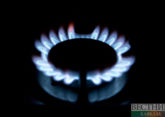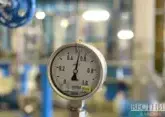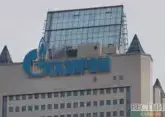Natural gas prices have been ceding ground with the selling pressure primarily driven by the delayed onset of winter and weak cash pricing. Natural gas prices were quoted at a seven-week low of $4.77/MMBtu on Monday's intraday session, 23% below the 13-year high they attained a month ago. Oil Price reports that Russia, one of Europe's biggest natural gas providers, has been accused of intentionally withholding supplies, comments that Putin quickly rubbished, saying Europe's energy woes are self-inflicted.
Gas traders contend that one of the drivers of the rally is that Russia has been limiting its European gas supplies to the levels in long-term contracts and has allowed Gazprom's storage facilities in the continent to fall to very low levels. But people expecting Russia to become the new 'Gas-OPEC' could be in for a major disappointment. Gas prices in Europe have started surging again as traders see little evidence that Russia is capable of making good on Putin's promise of increased exports.
According to the Financial Times, whereas Gazprom started adding some gas to its largest storage sites in Germany and Austria over the weekend, Russia has failed to book additional pipeline capacity, suggesting that any storage fill would come from existing flows. "Russia has done what it said it was going to do, but in a very narrow way. What would get a bigger reaction from the market would be if Gazprom went back to auctioning short-term gas supplies, as they have done in previous years," Laurent Ruseckas at IHS Markit tells FT. European benchmark futures jumped as much as 10% to above €80/MWh while the U.K. benchmark climbed 6% to ~£2/therm.
Swing producer
The natural gas sector finds itself in a tenuous position mainly because it lacks a strong organization like OPEC to try and maintain some semblance of order with the natural gas equivalent--the Gas Exporting Countries Forum (GECF)--usually preferring to take a hands-off approach. Here, gas producers usually dance to their own tunes, adjusting production according to the prevailing market dynamics, but none of the members have the flexibility to act as swing producers.
Sure, Norway's Equinor (NYSE:EQNR) is able to optimize its domestic gas output by deferring production when prices dip too low. Meanwhile, producers who do not use long-term futures contracts, such as Egypt, are forced to halt production when it stops making economic sense while Russia's Gazprom is mainly limited by how much their transport infrastructure can handle.
Russia's ability to regulate the natural gas markets appears quite limited. Last year, Russia completely turned off flows from the 2,607-mile-long Yamal-Europe pipeline that runs across Belarus, Poland, and Germany with a capacity of 33 bln cubic meters of gas per year, yet the markets hardly took notice with prices remaining severely depressed. Prices at the Dutch Title Transfer Facility, a virtual trading point for natural gas in the Netherlands, plunged to ~$40 per 1,000 cubic meters in May. That's considerably lower than the $47 on average per 1,000 cubic meters that Gazprom forks over as transit costs for the pipeline.
The litmus test of Gazprom's capacity to act as a swing supplier was its ability to drop production dramatically in 2020 and then to bring it back up again quickly in 2021. Yet, Gazprom has failed to bring any more spare production capacity online when needed most–because it has none left.
According to Vitaly Yermakov, expert with the Centre for Comprehensive European and International Studies, National Research University Higher School of Economics, Gazprom has really been "firing on all cylinders", pushing its gas output to maximum levels at all of its key fields for most of 2021 so far. In fact, there was no sharp cyclical decline in output over the summer months.
Yermakov points to several reasons why Gazprom has been unable to cover the call for increased gas production or to fully refill gas storage in Russia and in Europe. First off, very low gas prices in 2020 forced extremely high withdrawals of gas from storage by producers in a bid to minimize transportation costs and reduce losses. Second, the combined effects of robust gas demand, extreme weather patterns, and limited LNG availability in Europe have resulted in extreme market tightness and high prices. Gazprom has actually done well by managing to meet all its contractual obligations and increased deliveries to Europe, but could not single-handedly address Europe's energy insecurity.
Yermakov says Russia is not about to run out of natural gas, and its prolific reserves allow the country to meet much higher overall demand. However, bringing additional production online is something that cannot be done at the push of a button. Russia is fully capable of producing much more gas in the long term but needs to secure this output by signing new supply contracts with buyers. In other words, Russia is not ready to spend billions of dollars just to maintain spare productive capacity and meet demand spikes in Europe and elsewhere.
Further, Russian natural gas fields have been evolving, making this task even more challenging. There are few physical links between the Central corridor that connects the country's old and declining gas fields in Nadym-Pur-Taz with consumers in Central Russia, and the Northern corridor that connects growing new production in Yamal with northwest Russia making it hard for Gazprom to swing flows between the Northern and Central corridors, especially during the winter.
In the final analysis, Yermakov concludes by saying that Russia could develop the necessary infrastructure and improve its supply flexibility if the offtake is guaranteed by new contracts.










